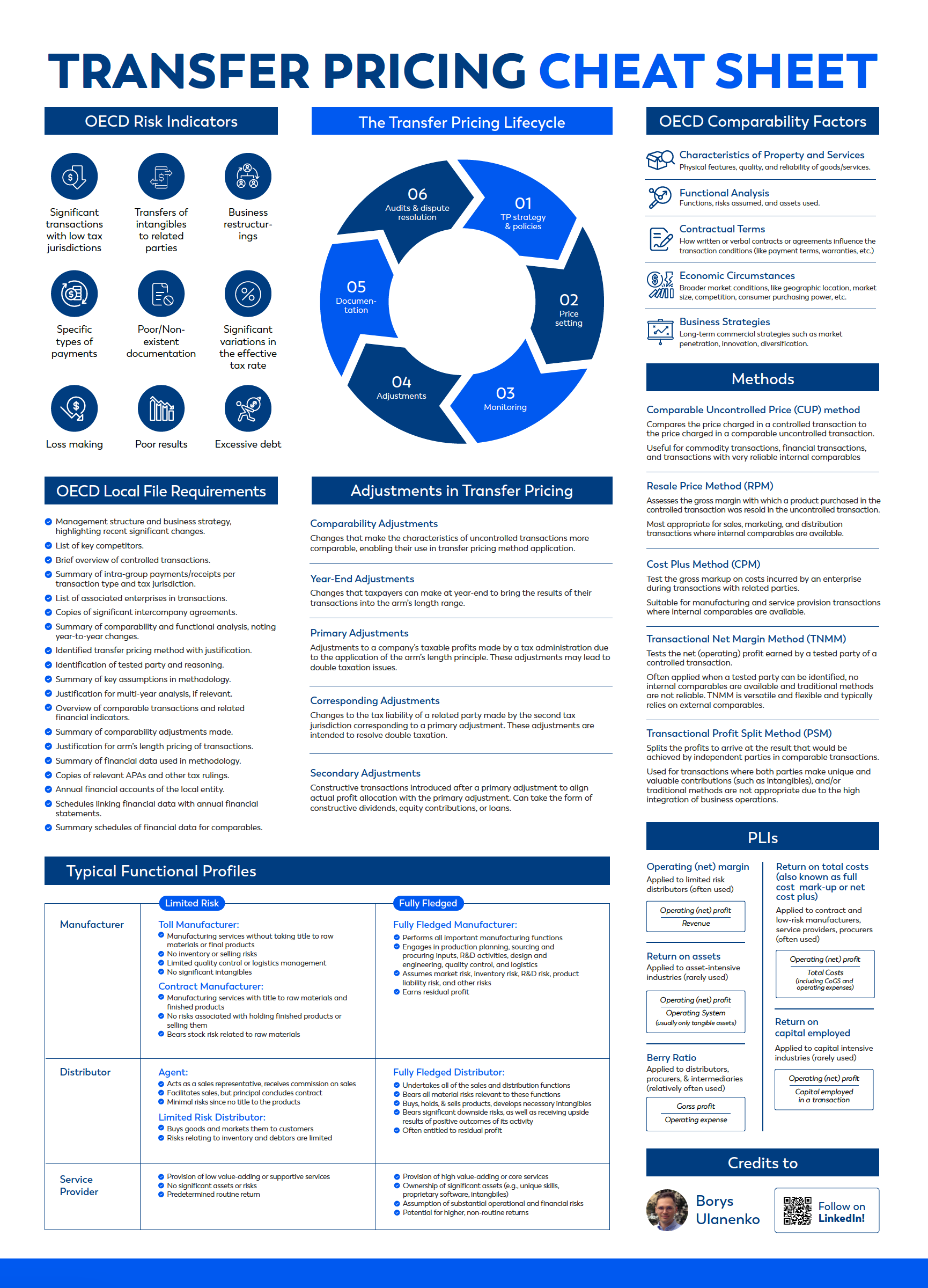5 Things Every Transfer Pricing Specialist Should Remember About PEs
Borys Ulanenko
Businesses can establish their foreign operations in several ways. Transfer pricing primarily deals with subsidiaries (separate legal entities). MNEs may also establish foreign branches, offices, factories, and other facilities, which are not incorporated but remain part of the domestic legal entity. This structure is also called a “Permanent Establishment” (PE).
The PE concept is a cornerstone of the modern international tax system and forms the basis of how MNEs are taxed. It evolved in the 1920s and was included in the first model tax treaty developed by League of Nations in 1928. Since then, the PE concept has been changed and reformed several times. Nevertheless, the fundamental principles have stayed the same, which explains the modern debate on the suitability of the PE concept in an era of financial transactions, service economy, remote working, and e-commerce.
Transfer pricing specialists usually focus on structuring and analysing transactions between associated enterprises (distinct legal entities), and often ignore potential PE issues and risks.
These are 5 things to remember about PEs when analysing transfer pricing:
These are 5 things to remember about PEs when analysing transfer pricing:
1. There are various types of PEs, and some of them are not easy to identify. For example, agency or service PE (under the UN Model) can be tricky, and MNEs may create PEs unintentionally. Therefore, when you conduct the transfer pricing analysis, always ensure that the structure you are putting in place or analysing is not creating unintentional PE.
2. Companies can also create PE for related parties. Even though the OECD Model Article 5 says that “the fact that a company which is a resident of a Contracting State controls or is controlled by a company which is a resident of the other Contracting State, or which carries on business in that other State (whether through a permanent establishment or otherwise), shall not of itself constitute either company a permanent establishment of the other”, there are cases where the company may be regarded as a dependent agent of a foreign related party. Check Commentary on Article 5 (paragraph 90) for an example.
3. In some countries, the provision of services to a related party can trigger a PE. When you analyse services transactions, remember that the provision of services can sometimes create a service provider’s PE in a service recipient country.
4. PEs are not separate legal entities; they do not conduct transactions with their head offices. That is why you will usually not see the dealings between head offices and PEs in financials (in a way you usually will identify controlled transactions).
5. In some countries, PEs may be required to prepare a local file. And it can be a problematic issue taking into account other points above.
What are
other PE-related issues that you know? Share them with us, and we will add them
to the list!
In our textbook,
we dedicate a special chapter to discuss PEs and how PEs are connected with
transfer pricing. We also cover PEs in Module 15 of our transfer pricing
course.
For more details about the textbook and the course, contact us:

We are an online educational platform that helps professionals and aspiring individuals to succeed in their goals.
Featured links
Get your free TP cheat sheet!
Discover the essential concepts of TP in one concise, easy-to-follow cheat sheet.

Thank you! Download here.
What is the EU Directive?
The EU is run by an elected EU Parliament and an appointed European Council. The European Parliament approves EU law, which is implemented through EU Directives drafted by the Commission. National governments are then responsible for implementing the Directive into their national laws. In other words, EU Directives are draft laws that then get passed by national governments and then implemented by institutions within the member states.
What is CbCR?
Country-by-Country Reporting (CbCR) is part of mandatory tax reporting for large multinationals. MNEs with combined revenue of 750 million euros (or more) have to provide an annual return called the CbC report, which breaks down key elements of the financial statements by jurisdiction. A CbC report provides local tax authorities visibility to revenue, income, tax paid and accrued, employment, capital, retained earnings, tangible assets and activities. CbCR was implemented in 2016 globally.
